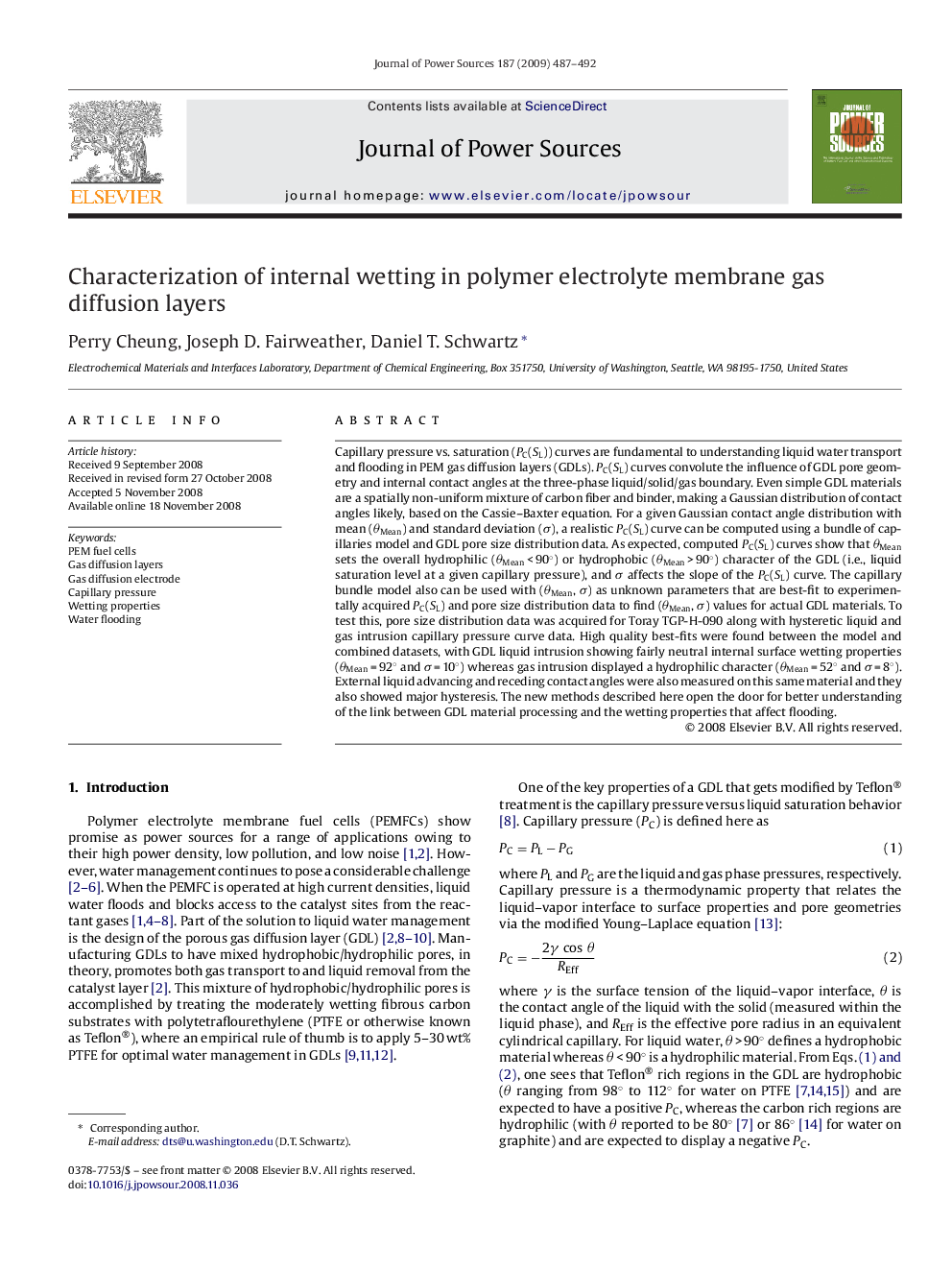| Article ID | Journal | Published Year | Pages | File Type |
|---|---|---|---|---|
| 1285250 | Journal of Power Sources | 2009 | 6 Pages |
Capillary pressure vs. saturation (PC(SL)) curves are fundamental to understanding liquid water transport and flooding in PEM gas diffusion layers (GDLs). PC(SL) curves convolute the influence of GDL pore geometry and internal contact angles at the three-phase liquid/solid/gas boundary. Even simple GDL materials are a spatially non-uniform mixture of carbon fiber and binder, making a Gaussian distribution of contact angles likely, based on the Cassie–Baxter equation. For a given Gaussian contact angle distribution with mean (θMean) and standard deviation (σ), a realistic PC(SL) curve can be computed using a bundle of capillaries model and GDL pore size distribution data. As expected, computed PC(SL) curves show that θMean sets the overall hydrophilic (θMean < 90°) or hydrophobic (θMean > 90°) character of the GDL (i.e., liquid saturation level at a given capillary pressure), and σ affects the slope of the PC(SL) curve. The capillary bundle model also can be used with (θMean, σ) as unknown parameters that are best-fit to experimentally acquired PC(SL) and pore size distribution data to find (θMean, σ) values for actual GDL materials. To test this, pore size distribution data was acquired for Toray TGP-H-090 along with hysteretic liquid and gas intrusion capillary pressure curve data. High quality best-fits were found between the model and combined datasets, with GDL liquid intrusion showing fairly neutral internal surface wetting properties (θMean = 92° and σ = 10°) whereas gas intrusion displayed a hydrophilic character (θMean = 52° and σ = 8°). External liquid advancing and receding contact angles were also measured on this same material and they also showed major hysteresis. The new methods described here open the door for better understanding of the link between GDL material processing and the wetting properties that affect flooding.
